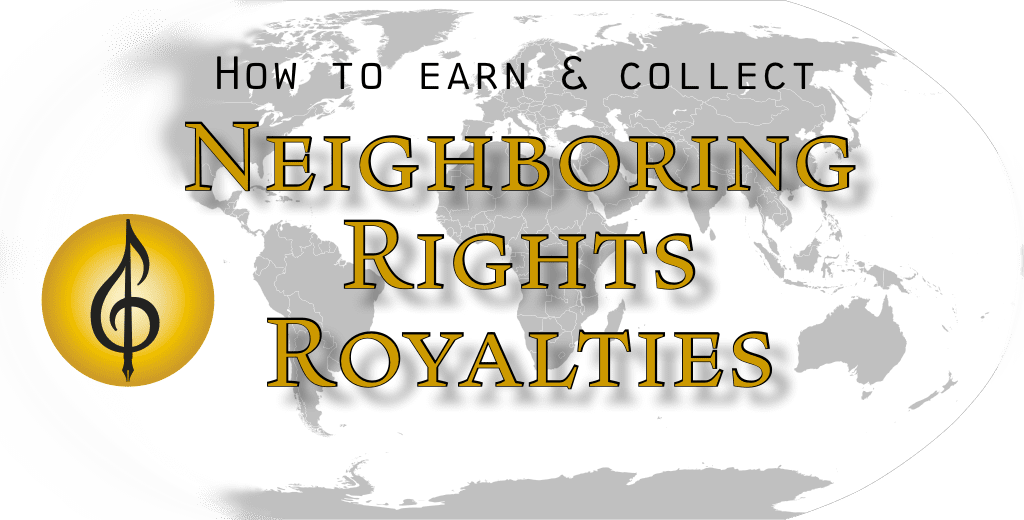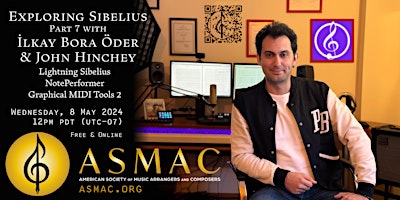
As music industry professionals, we all know about performance royalties; it’s a big part of our income stream that can continue earning more years after the music is released.
But what if there were more royalties to collect that you’re missing out on? Enter Neighboring Rights Royalties.
Key Takeaways
- Neighboring rights royalties offer a lucrative revenue stream separate from traditional performance royalties, providing additional income opportunities for musicians and rights holders.
- Understanding the role of neighboring rights organizations and international agreements is crucial for maximizing earnings and navigating the complex landscape of royalty collection.
- Leveraging technology and partnering with experienced professionals can streamline the process of registering works, tracking royalties, and ensuring accurate compensation for performances worldwide.
What Exactly Are Neighboring Rights Royalties?
Neighboring rights royalties are an often overlooked part of the music industry revenue stream.
Neighboring rights are essentially part of the legal entitlements that performers, record labels, and other stakeholders in the music industry hold.
They guarantee that you, as a musician or someone holding the rights to a sound recording, will be compensated for public performances of your works.
The royalties we’re all used to receiving from collection societies like ASCAP, BMI, and SESAC in the United States relate to the copyright of the underlying composition.
The neighboring rights royalties, also known as related rights royalties, relate to the copyright for the sound recording.
How Do I Collect These Royalties?
For any American performers and owners of their master recordings, international neighboring rights organizations are particularly useful; you can register with them to collect these royalties for you abroad even though in the United States, the neighboring rights royalties do not currently exist.
There is one catch: many of the Collective Management Organizations (CMOs) / Collection Societies do not compensate rights holders in the U.S. for neighboring rights royalties earned in their country due to reciprocity restrictions.
The good news is there are two ways you can help increase your chances of receiving these royalties:
- Find an international neighboring rights organization that understands this dynamic and knows which organizations compensate for U.S.-based musicians and stakeholders.
- Record the work abroad you wish to collect neighboring rights royalties for so it qualifies for collection with more CMOs and collection societies.
Neighboring Rights Organizations
Role and Function
Neighboring rights organizations, often known as collective management organizations (CMOs), collect royalties when a record is played in public, broadcast on TV, streamed on TV, played on satellite or terrestrial radio, web radio, copied privately (paid on blank media bought for personal use), or included in webcasts or simulcasting.
They represent the rights of performers and master recording owners by securing fair compensation for the public performance of their works.
Types of Organizations
Organizations that manage these rights can be categorized broadly as:
- Collective Management Organizations (CMOs) / Collection Societies: These entities manage rights on a collective basis and are usually country-specific.
- International Neighboring Rights Administrators: They work across various countries and are generally responsible for collecting and distributing royalties internationally.
Rights and Royalties Management
Collection of Royalties
Your recordings generate multiple revenue streams when they are used publicly.
Neighboring rights organizations focus on collecting public performance royalties and digital performance royalties. These are due when your music is played on radio stations, streaming services, or public venues.
Distribution of Revenues
Once collected, the neighboring rights royalties are allocated and distributed to the rightful owners. The distribution process considers various factors, such as airplay frequency and the type of use.
Organizations also issue royalty statements that detail your earnings so you can understand exactly where your revenues come from.
Royalty Rates and Calculations
Determining royalty rates can be complex, involving statutory rates and negotiated agreements.
Neighboring rights organizations often use detailed formulas based on factors like the length of usage and audience size to calculate the royalties due. These rates can differ greatly between territories, so working with organizations with the expertise to manage them appropriately is important.
Agreements and Legal Aspects
Collection agreements govern your relationship with the CMOs and outline your rights and obligations. These include aspects related to the collection of mechanical royalties in some cases, depending on the scope of the organization’s services.
The Global Context
International Agreements
A series of binding treaties and agreements is at the heart of international safeguards for neighboring rights.
Chief among these is the Rome Convention Treaty of 1961, which established standards for protecting performers, producers of phonograms, and broadcasting organizations at an international level. As a signatory country to this treaty, nations agree to certain baseline protections across borders.
Further strengthening international frameworks is the Agreement on Trade-Related Aspects of Intellectual Property Rights (TRIPS), adopted by World Trade Organization (WTO) members in 1994. TRIPS includes provisions for neighboring rights as part of the wider canvas of intellectual property rights, setting a global standard that signatory countries must adhere to.
Country-Specific Regulations
Each nation may build upon these international bases with its own rules.
Specifics can vary dramatically from one jurisdiction to another. Beyond national legislation, local organizations often engage in reciprocal agreements to ensure that rights holders are adequately compensated when their work is used in other countries.
These kinds of agreements are particularly important for the enforcement of rights because they leverage cooperation between various countries and international entities.
While international agreements provide a framework, the real-world application of neighboring rights is largely influenced by how each signatory country decides to interpret and enforce these accords through their domestic policies and relationships with local organizations and other international organizations.
As I mentioned earlier, if you’re a U.S.-based musician or rights holder, it’s especially important to work with an organization that understands these regulations and knows how to collect the royalties for you.
Technology and Neighboring Rights
New technologies have provided innovative ways to track and collect neighboring rights royalties.
For instance, digital fingerprinting allows for precise identification of music played across platforms, ensuring accurate compensation. This underscores the need for you as an artist, label, or rights holder to be affiliated with organizations specializing in managing these rights to facilitate the correct distribution of your royalties.
The use of this technology is becoming increasingly vital in safeguarding your interests in the age of digital music consumption.
Performers and Neighboring Rights
Your creative output has value as a performer, and neighboring rights ensure you’re compensated when your performances are broadcasted or played publicly. This includes live performances captured on recordings and studio sessions that may be played over the radio or television.
Types of Performers Affected
- Performing artists: Your performances are protected if you’re taking center stage or are part of the main act.
- Session musicians: Even if you’re not in the limelight, your contributions to recordings give you the right to royalties.
- Non-featured performers: If you’re a backup singer or play a supporting role, you still hold neighboring rights for any use of your performances.
Challenges and Opportunities
- Recognition and Collection: Tracking all instances where your performance is used yourself would be next to impossible; however, neighboring rights organizations exist to monitor such uses and ensure you’re paid your dues.
- International Differences: Rights vary by country, presenting challenges in navigating different systems and opportunities to maximize your earnings worldwide.
Practical Guidance for Stakeholders
Navigating the System
As a rights holder or master recording owner, you play a vital role in the music industry, and understanding the structure of these organizations is the first step. Here’s how:
- Identify the appropriate organization: Each country has its own set of organizations responsible for collecting and distributing royalties. For example, PPL (Phonographic Performance Limited) is a major player in the UK.
- Register your works: Ensure your songs or recordings are properly registered with the organization. This is the easiest way to ensure you are ready to collect royalties.
- Crucial separation of rights: Understand the difference between performance and mechanical rights. This separation is essential; for instance, Bob Dylan sold his songwriting catalog but still retains some rights associated with his recordings.
Maximizing Royalty Revenue
Your musical works are your assets. Earning the royalties you deserve for them should be your top priority. Follow these practical steps:
- Stay Updated: Keep your contact information and catalog details current to avoid missing out on royalties.
- Audit Your Statements: Regularly check your royalty statements for accuracy. Errors can happen, and it’s your responsibility to catch them.
- Collaborate with Experts: Partner with publishing administrators or rights organizations that bring years of experience to the table.
Frequently Asked Questions
What distinguishes neighboring rights royalties from performance royalties?
Neighboring rights royalties pertain specifically to the copyright for the sound recording, whereas performance royalties typically relate to the underlying composition.
How do I register for neighboring rights royalties as a U.S.-based musician or rights holder?
While neighboring rights royalties aren’t currently available in the United States, you can register with international neighboring rights organizations to collect royalties for performances abroad.
What factors influence the calculation of neighboring rights royalties?
Royalty rates are determined by various factors including the length of usage, audience size, and the specific agreements negotiated with collective management organizations (CMOs) or international neighboring rights administrators.
Are there any international agreements governing neighboring rights?
Yes, international agreements such as the Rome Convention Treaty of 1961 and the Agreement on Trade-Related Aspects of Intellectual Property Rights (TRIPS) establish standards for protecting performers and producers of phonograms at an international level.
How can technology facilitate the collection of neighboring rights royalties?
New technologies like digital fingerprinting enable precise identification of music played across platforms, ensuring accurate compensation for rights holders.
What are some practical steps for maximizing neighboring rights royalty revenue?
Stay updated on your catalog details, regularly audit royalty statements for accuracy, and collaborate with experienced publishing administrators or rights organizations to ensure you’re maximizing your earnings.
Conclusion
Neighboring rights royalties present an opportunity for performers, recording artists, and rights holders.
Let’s face it; music is being devalued on many fronts. Being able to add another royalty income stream to your business wouldn’t hurt!
Navigating the collection of neighboring rights royalties can be complex, especially in the international arena, which is why it’s best to work with an international organization that understands how to navigate this complex field, and knows how to effectively collect and manage these royalties.
[Ed. Also consider watching Erin M. Jacobson’s event video on Don’t Get Screwed! How to Protect Yourself as an Independent Musician, available to ASMAC members.]—Tero Potila
Tero is a professional music composer and producer. His career combining knowledge and experience from music, TV, film, ad, and game industries gives him a unique perspective that he shares through posts on teropotila.com.



